Morro Bay oyster farmers are thriving now — but they face a looming threat
Often under a blanket of fog, George Trevelyan rises in the early morning hours to lead his team turning oyster bags in the Morro Bay estuary.
The farm tends to a million and a half oysters during the course of a year, raising them from tiny juveniles to the plump delicacy that will be barbecued or served on the half shell after more than a year, sometimes two, of growing time.
It’s a job that’s been his passion for 10 years since he began farming here in 2009. He is one of the two oyster farmers in Morro Bay who produce shellfish prized by diners both locally and around the state.
For Trevelyan, who owns Grassy Bar Oyster Co., and Neal Maloney, owner of Morro Bay Oyster Co., that business is booming — but there are potential clouds on the horizon.
Among other environmental challenges facing the farmers, a recent study from researchers at UC Davis suggests climate change may increasingly impact the California industry, altering the habitat in the state’s estuaries in a way that reduces oysters’ preferred “Goldilocks zone” and potentially hinders their growth and survival.
Who’s eating Morro Bay oysters?
Both Trevelyan and Maloney sell only live product, quickly getting their oysters on ice and ready for shipping once they’re harvested.
Grassy Bar Oyster Co. and Morro Bay Oyster Co. each sell up to a million oysters a year to two distinct markets.
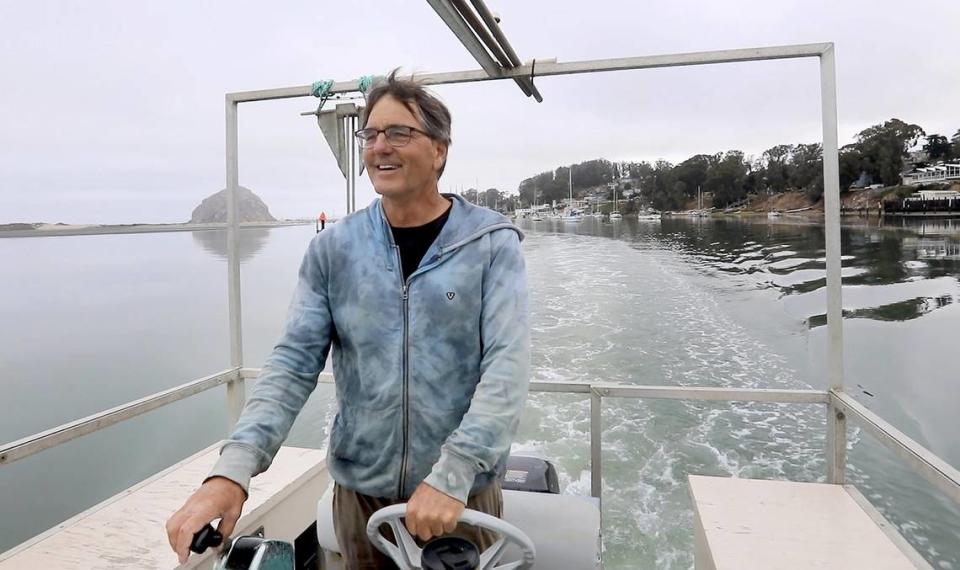
The first is the boutique half-shell market of oyster bars and restaurants looking to sell small, pretty oysters.
The second is fed by buyers who want large, fat oysters for barbecuing and are less concerned about what they look like.
Trevelyan explained that oysters for both markets command the same price, but the first is better for the farm, as smaller oysters are younger and require less labor and growing time.
Maloney — who has farmed the bay since 2004 before starting his company in 2008 — also echoed this sentiment, saying 95% of his farm production is “cocktail” oysters. He used to sell oysters dockside and at farmers markets but has found that restaurants have offered more routine, repeat business.
Both Trevelyan and Maloney said that some of their oysters go to buyers in San Francisco and Los Angeles, but they have such strong local demand for product, it exceeds their production ability.
Maloney credits “the local foodie movement that has really woken up people in California to seafood in general” — diners are more adventurous, ordering oysters more frequently from restaurant menus.
Maloney said harvesting an oyster right out of the water and handing it directly to someone “can change their perceptions about oysters.”
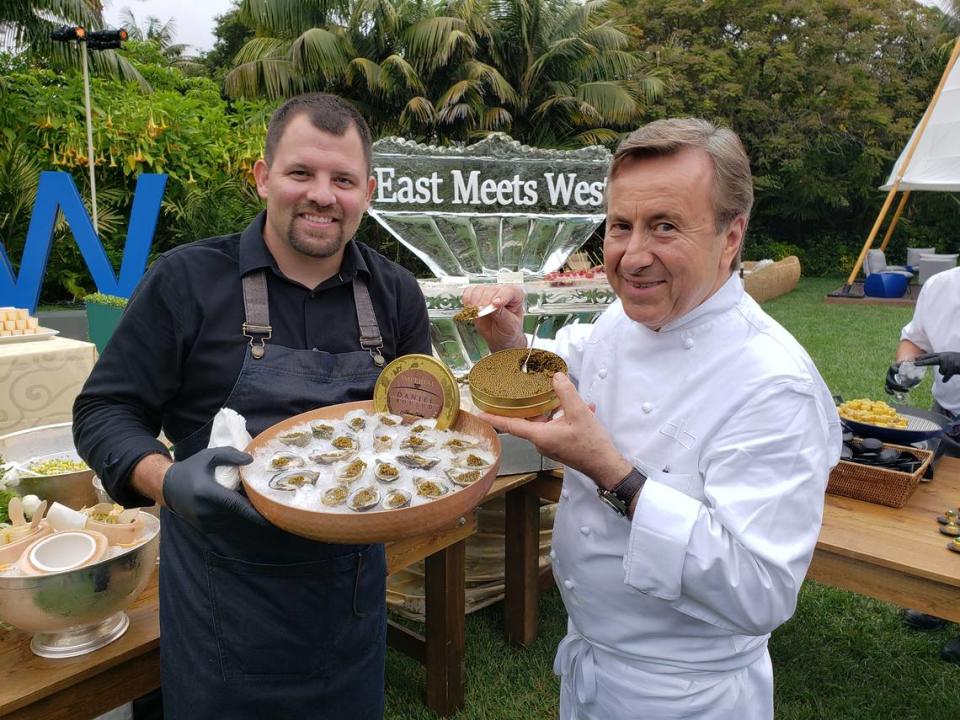
He jokingly likened his role to that of a drug dealer, as once someone tastes his farm’s oysters, “my phone rings at all hours,” leading him to meet up with people looking for an ice chest full of fresh oysters.
Trevelyan’s oysters can be found at Giovanni’s Fish Market and Tognazzini’s Dockside Market in Morro Bay, while Maloney sells his at locations like Ada’s Fish House in Pismo Beach and Morro Bay’s Windows on the Water.
What makes a good oyster?
So much of an oyster’s taste is a reflection of its environment, Trevelyan said, in particular “water quality, temperature, and also the phytoplankton that the oysters have been feeding on.”
His son, Charles Trevelyan — farm manager for Grassy Bar — described this as the shellfish’s “merrior” — the ocean counterpart to the term “terrior” that refers to how influences like soil and climate affect grapes and create the unique arc of flavors associated with particular wines.
“The oysters will taste differently from different bays,” Charles Trevelyan said.
Maloney noted the virtues of the estuary.
“We have this very unique bay,” he said, adding that the water turns over far faster than in other bays, leading to a nutrient-rich environment that’s good for the oysters.
He said that freshwater flow can shift the taste, as his oysters grown in fresher conditions “translate to sweet underpalate,” with a “green melon rind finish, kind of like cantaloupe.”
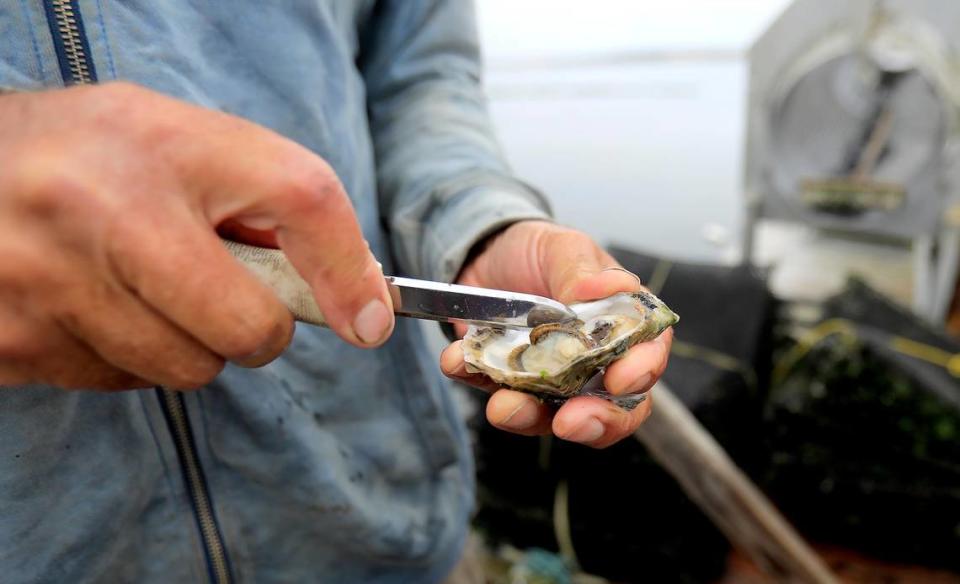
For the farmer, one challenge in ensuring good oysters is the inability to always size up their quality without opening them up.
“If they are really super healthy and happy, they grow really plump and they fatten up, and the whole interior of the shell fills up with this really succulent meat that’s really delicious,” George Trevelyan said, “and other times you might shuck up, and open an oyster and it’s just mostly watery, and there’s just a little tiny oyster meat in there, and that’s not a good oyster.”
“We are constantly checking oysters to see how they are,” he said.
How do you grow an oyster (or a whole lot of them)?
Like most oyster farms in California, both Grassy Bar Oyster Co. and Morro Bay Oyster Company raise Pacific oysters — Crassostrea gigas — a species that originally comes from Japan and is one of the most widely cultured across the globe.
The two farms aren’t in the business of producing baby oysters to kick things off and instead procure these “seed” oysters from California Fish and Wildlife-approved hatcheries like those in Humboldt, Washington or Kona, Hawaii.
George Trevelyan said a single cooler can hold a half million minuscule juvenile oysters each about an eighth of an inch long.
The young oysters are placed in containers mounted under a dock, where they are nurtured by the tidal waters for about six months.
When they are large enough, the oysters are transferred to bags and raised to adulthood using one of three methods that rely on movement either with human help or from the natural motion of the estuary’s tides.

Maloney said stress — introduced by time spent out of the water and mechanical actions on the oyster like shaking or tumbling — is the magic ingredient for producing better oysters.
He likened this to an oyster going to the gym — time exposed to the air means it needs to squeeze its muscle closed to form a good seal between top and bottom shell. Agitating the oyster can chip it’s shell, prompting it to grow new layers of shell that also promote more cupping.
Both ultimately result in an oyster with more and higher quality meat inside its pearly interior.
Grassy Bar uses a bottom culturing method that requires workers to manually flip the bags to promote good growth and remove encrusting sea life.
Morro Bay Oyster Co. uses a modification of the method that lets bags partially move with the tide, but still requires employees to manually shake 4,000 floating culture bags once a week in order to introduce enough stress on the oysters.
But both farmers have been making the transition to a process called tumble farming.
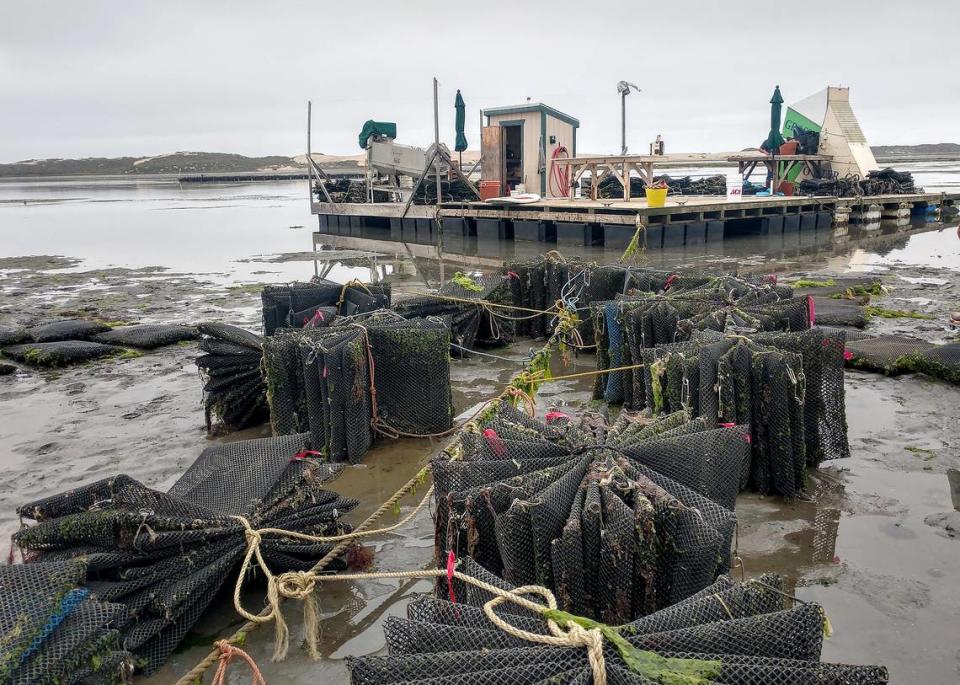
Oysters grown this way are in bags suspended by one end from a central line, while each bag sports a buoy at the end to help move them up and down with the tide. The technique relies on the bay’s action to do most of the work of sculpting a quality oyster.
Charles Trevelyan — who builds and installs much of the farm’s culturing technology — said tumble lines produce oysters “that grow round and deeply cupped,”with “these thick mature shells, and are just packed with oyster, just like to the edges.”
Farm owner George Trevelyan further explained the game-changing nature of tumble culture for the farm — only 10 to 20 percent of oysters produced by traditional bottom culture can be used for the lucrative half shell market, whereas tumbling pushes that up to 90 percent while requiring significantly less human labor along the way: “It’s totally transforming our oysters.”
While the newer methods are a boon to both farms, changes to farming practices have to happen against the backdrop of state regulation and environmental challenges.
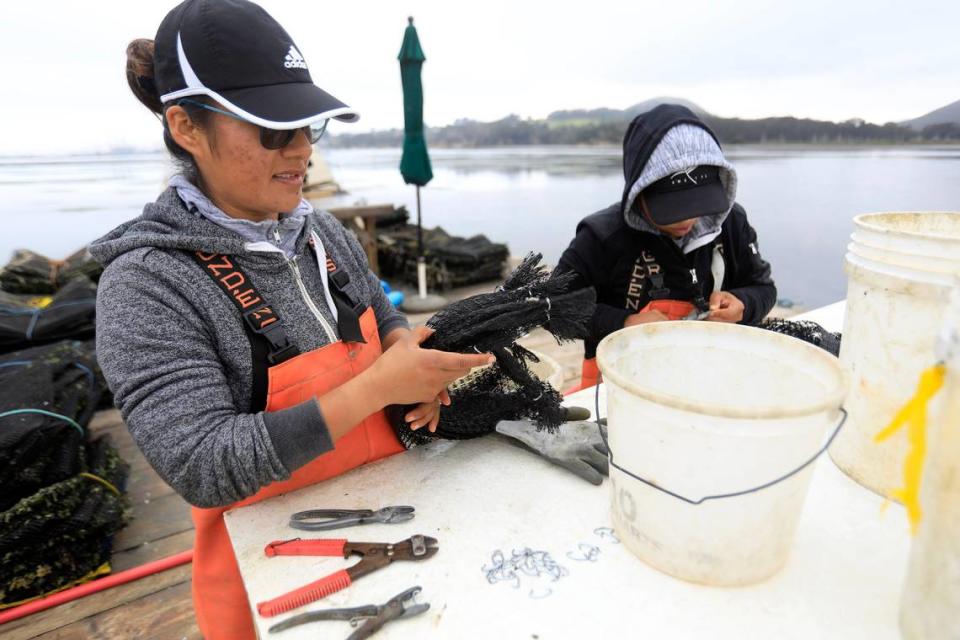
George Trevelyan said that in 2018, the California Coastal Commission started requiring all oyster farmers statewide to apply for a coastal development permit in order to continue farming.
Anytime they want to change their growing activities, including their ongoing addition of new tumble lines, both Maloney and George Trevelyan said they must apply to amend their permit — a process that also requires a period of public comment.
What does the future hold?
To produce high-quality oysters, Maloney and Trevelyan are dependent on the the water quality and conditions of the bay.
A UC Davis study published this month in the journal Limnology and Oceanography examined how ideal conditions for oysters, which scientists call the “Goldilocks’ zone,” might be affected by climate change.
Their research at Tomales Bay in Northern California found that oysters’ estuary habitats are pressed from changing conditions on two fronts: the ocean and the streams and rivers that feed into it.

The UC Davis study found that the ideal growing zone for oysters will shrink based on climate change projections, and that their conclusions hold true for the entire state.
Because farmers’ operations are tied to very specifically designated growing areas and can’t be easily relocated, that could be a serious threat.
Trevelyan said it’s “really special to be here right in middle of California,” but incidents like the chalkier rather than pearly shells he’s seen on some of his oysters, and large die-off events of larval oysters in the mid-2000s at hatcheries on the Pacific Coast, remind him that the effects of climate change could be hitting closer to home.
For the time being, both Morro Bay oyster farmers will use their years of expertise to evolve their techniques and respond to changes both within regulation and the industry at large, so they can continue to delight local diners who appreciate that certain je ne sais quoi of the oyster.

